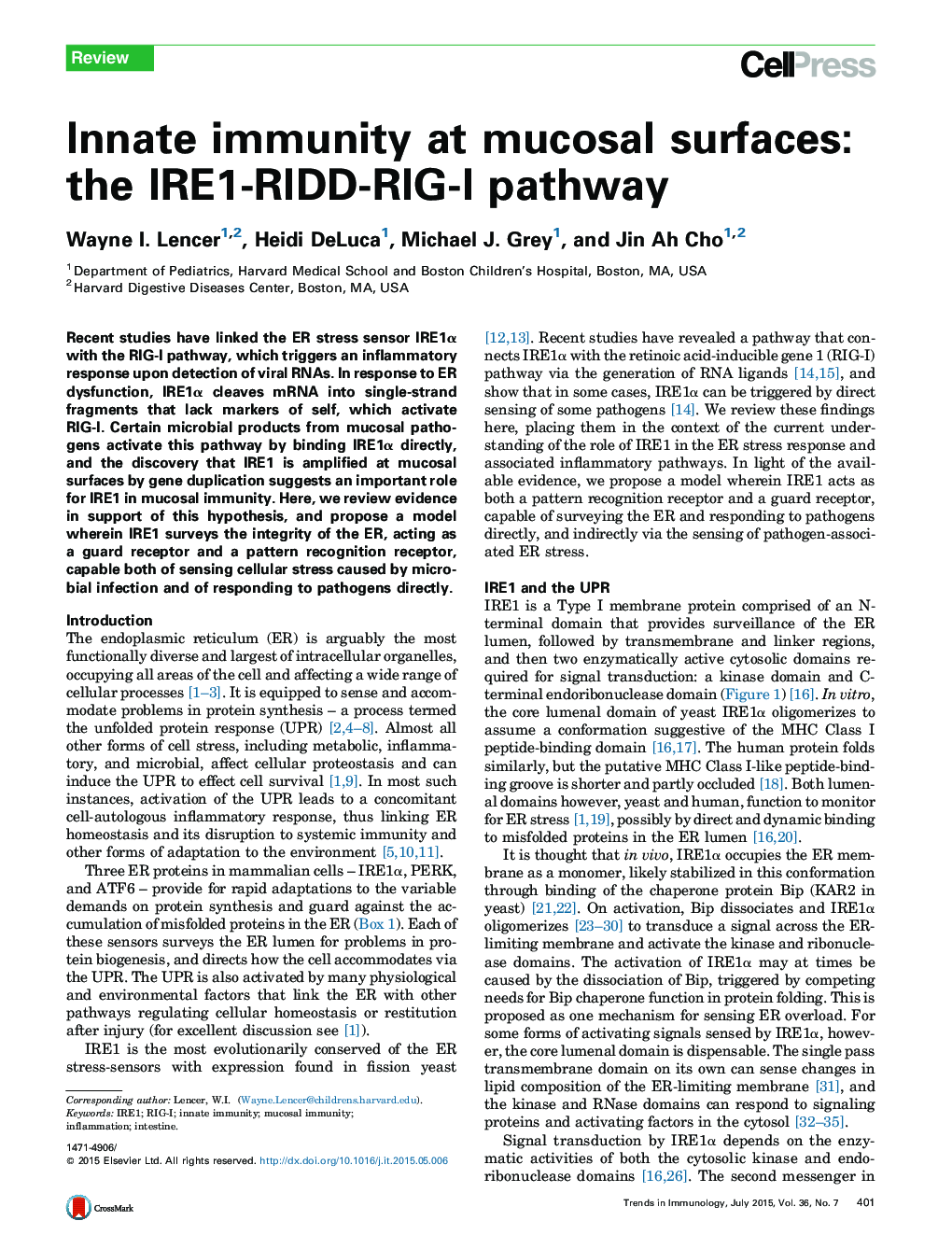| Article ID | Journal | Published Year | Pages | File Type |
|---|---|---|---|---|
| 4359722 | Trends in Immunology | 2015 | 9 Pages |
•IRE1 signals in innate immunity by producing mRNA fragments that activate RIG-I.•Genetic defects in regulation of the IRE1–RIG-I pathway induce IFNs in humans.•The pathway may be uniquely amplified at mucosal surfaces by expression of IRE1β.•IRE1 may function as both a guard receptor, responding to cell stress, and a direct PRR.•Innate immune pathways may survey the ER for signals of the presence of pathogens.
Recent studies have linked the ER stress sensor IRE1α with the RIG-I pathway, which triggers an inflammatory response upon detection of viral RNAs. In response to ER dysfunction, IRE1α cleaves mRNA into single-strand fragments that lack markers of self, which activate RIG-I. Certain microbial products from mucosal pathogens activate this pathway by binding IRE1α directly, and the discovery that IRE1 is amplified at mucosal surfaces by gene duplication suggests an important role for IRE1 in mucosal immunity. Here, we review evidence in support of this hypothesis, and propose a model wherein IRE1 surveys the integrity of the ER, acting as a guard receptor and a pattern recognition receptor, capable both of sensing cellular stress caused by microbial infection and of responding to pathogens directly.
